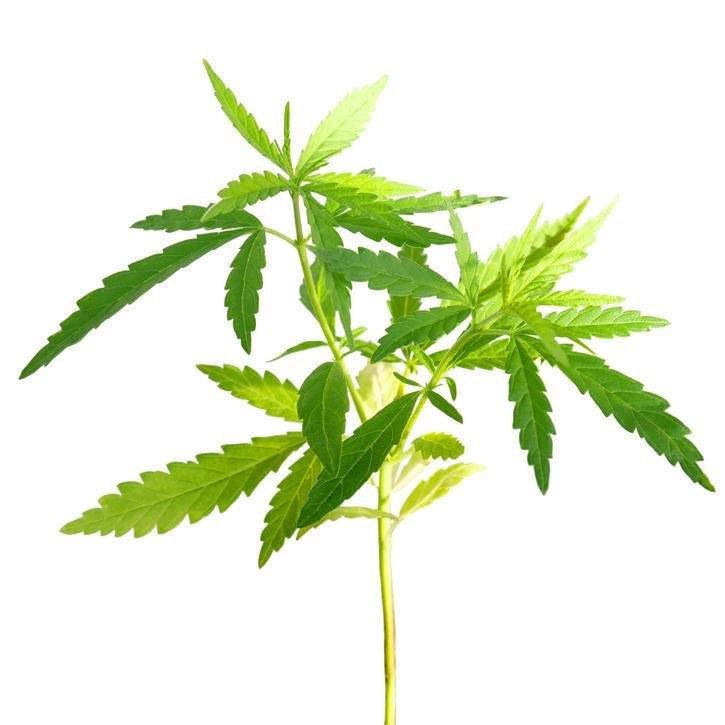It is a herbaceous, dioecious, annual plant, native to Asia, which has been cultivated since ancient times for its multiple uses: as a source of textile fiber, to extract oil from its seeds, as a medicinal plant and as a psychotropic.
It is also known as Indian hemp or marijuana.
It is a large plant that reaches up to 4 m in height, has an erect stem with palmately stipulated leaves, the lower ones opposite and the upper ones alternate. The leaves are on petioles up to 7 cm long. Each leaf is composed of 3 to 9 narrow leaflets, with acute apex, serrated margins and glandular trichomes lying on the upper and lighter colored underside. The glandular trichomes produce a resin as a way to protect the plant against external aggressions.
It conducts inflorescences in the axils of the upper leaves or at the end of the branches, with herbaceous and glandular bracts. The male inflorescences are branched, lax and with many flowers, while the female inflorescences are dense but with few flowers (5 to 8). The fruit is an achene, with a single seed, ovoid, somewhat compressed, white or greenish tinged with purple, enclosed in the perianth.
Recently, the cultivation of cannabis has been banned or regulated in many countries due to its psychoactive properties.
Dried female flowering tops.
Indian hemp is included in the list of plants whose sale to the public is prohibited or restricted due to its toxicity (Order SCO/190/2004, January 28).
Potential applications include: in case of chronic pain, as an antiemetic in patients receiving chemotherapy, in anorexia and cachexia in patients with terminal cancer or AIDS, in the spasticity of multiple sclerosis, in some cases of refractory epilepsy or in neurodegenerative diseases, among others.
Cannabidiol (CBD). In Spain only external use is allowed:
-.J. Bruneton. Farmacognosia. Fitoquímica. Plantas Medicinales. Editorial Acribia, 2ª edición.
-.Monografía de la SEFIT (Sociedad Española de Fitoterapia).
-.G. López, F. Brindis, S. Niizawa y R. Martínez. Cannabis sativa L. Una planta singular. Rev. Mex. Cienc. Farm vol.45 no.4 Ciudad de México oct/dic. 2014.
-.O. Sagredo. Efectos farmacológicos y fisiológicos del consumo de cannabis. Trastornos Adictivos 2011. 13; (3): 94-96.
-.G.Tamosiunas, E. Pagano, P. Artagaveitia. Una introducción al perfil farmacológico y terapéutico de la marihuana. Arch. Med Int vol.35 no.3 Montevideo dic. 2013.
-.Belén Peñalver Ruiz. Actualización fármacoterapéutica de los cannabinoides. Trabajo de Fin de Grado. Junio 2019. Facultad de Farmacia. Universidad Complutense.
-.Natural Medicine. Monografías.
